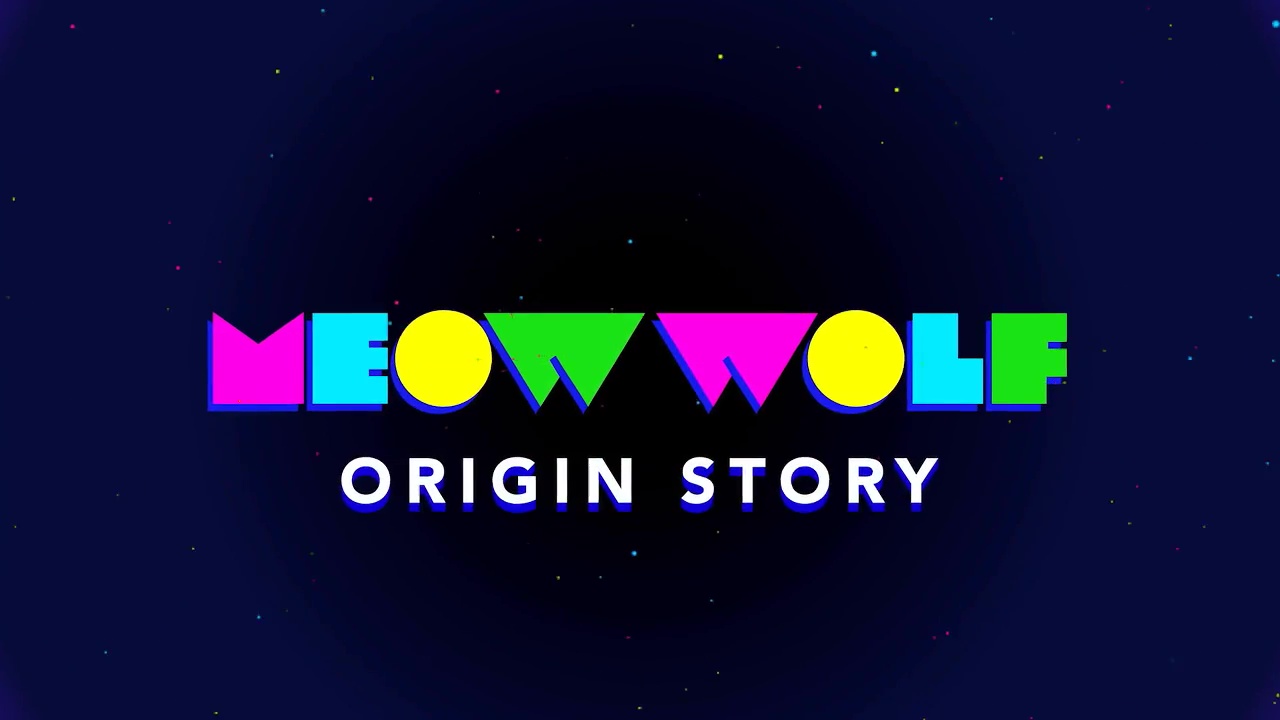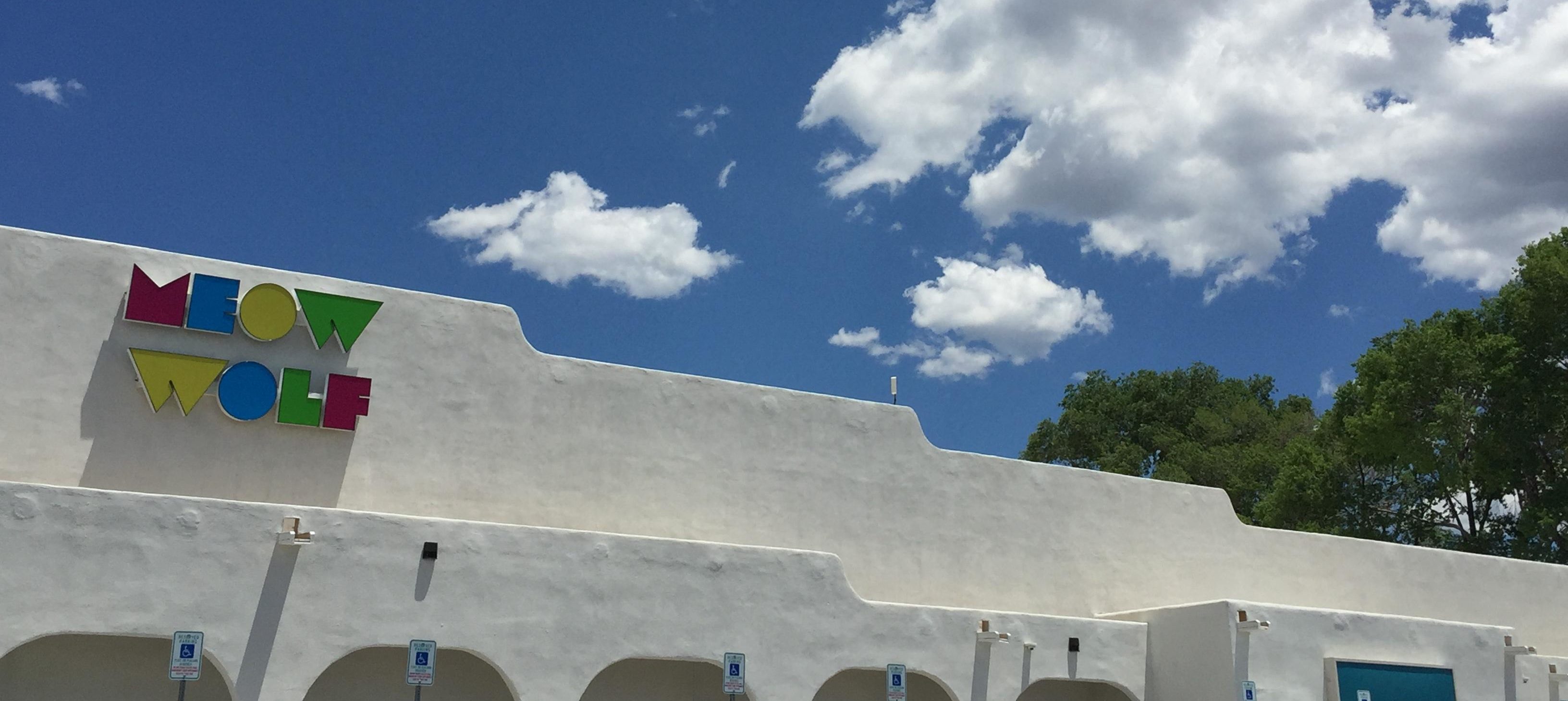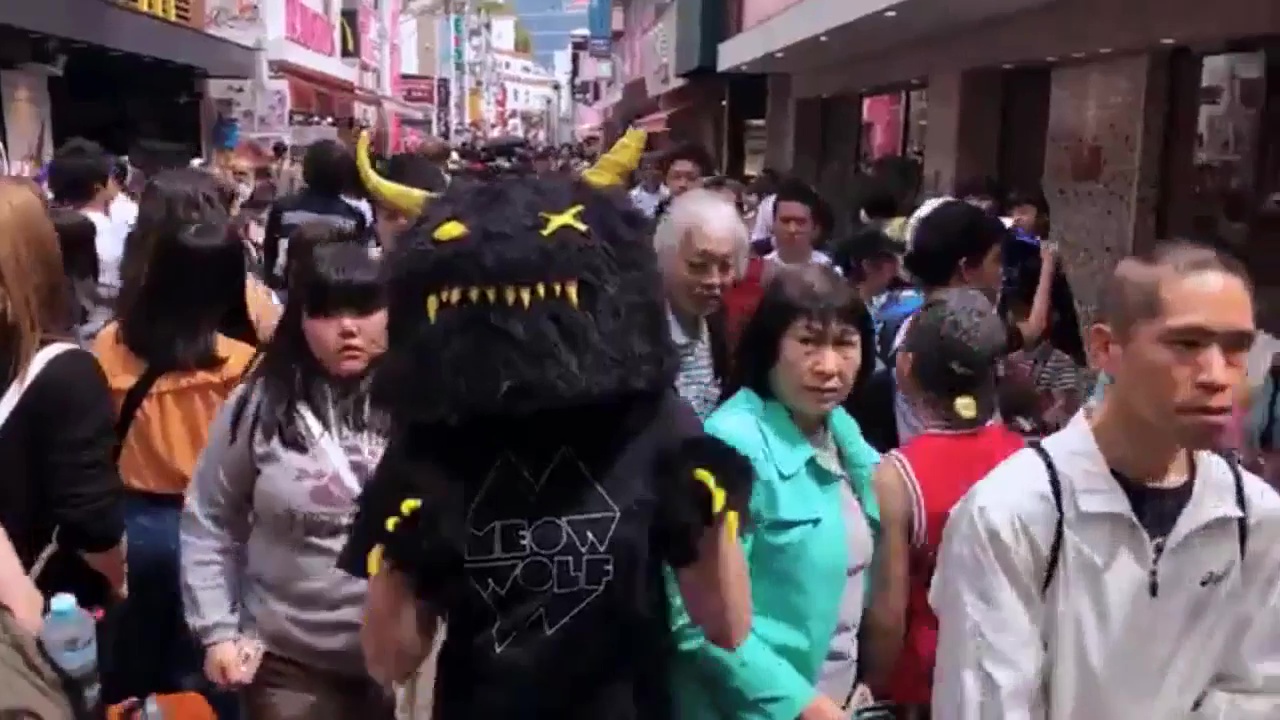
My family and I discovered Meow Wolf’s interactive art installation “The House of Eternal Return” purely by accident. In the summer of 2016, the four of us decided to rent an RV and drive west on I-40, eventually stopping in Santa Fe, New Mexico. It was there, while looking for things to do, that Susan ran across a review of Meow Wolf, describing it as “part art installation, part interactive fun house.” On a whim, we decided to go check it out.
The four of us spent roughly four hours wandering through The House of Eternal Return, taking pictures and trying to solve a mystery that we didn’t really understand. We talked about the experience and compared notes the entire drive home, and couldn’t wait to tell our friends back in Oklahoma about this bizarre and magical place we had discovered. Unfortunately, describing (and photographing) The House turned out to be difficult. After describing the experience to a few of our friends, one of them asked, “so is this a video game?” Another one asked if, maybe by accident, we had ingested some mescaline from a local cactus during our road trip. Our descriptions of The House must have sounded like the ravings of a lunatic to them. Secret passages! A musical mammoth skeleton, inside a cave of ice, inside a Victorian house! A 30-foot-tall robot! A refrigerator that leads to an inter-dimensional travel agency! No wonder they thought we were crazy.
Meow Wolf’s House of Eternal Return left us with so many questions that the following year we went back, this time determined to understand “the incident” that turned a seemingly ordinary house into a portal to other dimensions — leaving behind, among other things, a ten-foot-tall snow owl that stares deep into your soul. (You see? I sound insane!) We spent hours digging through letters, newspapers, photographs and journal entries inside the fake house, soaking it all in. We left that time with more answers than before, but there was one burning question left in our minds: what kind of crazy maniacs would build such a place?
The answer to that question can be found in the 2018 documentary Meow Wolf: Origin Story, directed by Morgan Capps and Jilann Spitzmiller, now available on DVD, Blu-ray, or through Video on Demand via Meow Wolf’s website.

On our first visit, it wasn’t originally clear to us that the place we visited was called The House of Eternal Return, and that Meow Wolf is the name of the group of artists who created it. (The sign outside of building says “Meow Wolf,” which is what confused us.) And while The House of Eternal Return is certainly covered in the documentary, the scope of the film is the story of Meow Wolf, the artists themselves.
The group of Santa Fe artists that eventually became known as Meow Wolf originally bonded together over their love of unique art and mutual disdain of art “gatekeepers.” After outgrowing a small cluster of homes located on the same property, the original core of Meow Wolfers decided to split the rent for a warehouse that they could paint to their heart’s content. One of Meow Wolf’s core values is “radical inclusiveness,” and the more people who discovered Meow Wolf, the more artists, many feeling disenfranchised and excluded from the traditional art scene, joined the collective.
Long before The House of Eternal Return, the members of Meow Wolf put on all sorts of shows, created videos, built interactive art experiences, and performed concerts at a dizzying pace. Everyone in the group had an equal voice; anything and everything went. Over time, the chaotic energy that fueled the group’s artistic visions also began to drive them apart. One of Meow Wolf’s co-founders, Vince Kadlubek, was shunned after attempting to introduce organizational structure into the chaos. Others walked away when they felt their voices weren’t being heard. Not everyone initially involved remained with the group, but eventually they found the right amount of structure for their anarchy. From that, the current incarnation of Meow Wolf was born.
The group’s first large scale installation was The Due Return, a 6,000 square foot inter-dimensional ship that was on display for only three months. The project, which cost $50,000 to build, was the group’s first largely profitable installation. It’s success led to the Wolf’s largest project to date (and first permanent installation), the House of Eternal Return. The documentary ends with a group of the original co-founders scouting locations for new Meow Wolf installations in Austin and Denver, and dreams of taking Meow Wolf from what wasn’t a million dollar company three years ago into a billion dollar artistic power house.
Meow Wolf: Origin Story crams a lot of information and history into its 88-minute run time. Audio and videophiles should keep in mind that much of the archival footage presented throughout the film came from old handheld camcorders, so while all the modern footage and interviews are presented in HD and look stellar, the older footage is occasionally jarring in its low-fidelity. Accompanying the film is a killer soundtrack that had me searching the closing credits for song titles.
Included with the film are a pile of extras. First up is a commentary track by directors Capps and Spitzmiller. In it, the two ladies discuss the source of some of the footage, things that were cut, and offer additional insights. There’s also a family-friendly audio track that omits the film’s salty language (artists love f-bombs). Also included are several full-length Meow Wolf performances that appear only as short clips throughout the documentary. Finally, there’s an interview with George R. R. Martin (who paid for the building that became Meow Wolf) and a longer Q&A panel session featuring Martin. It sounds like a lot, and it is, but if Meow Wolf captivates you the way they have my family, you’ll be digging through every last clip, embracing the weirdness.
In a way, Meow Wolf is not unlike the Island of Misfit Toys, that group of rag tag toys from the old Rudolph Christmas special that leave the North Pole because they were different. In the end of that special Rudolph returns to the North Pole, and his glowing nose, the very thing he was ostracized for, is celebrated. The rag tag members of Meow Wolf, once looked down upon by the Santa Fe art scene, now sit on top of a multi-million dollar empire, with plans of expanding to Austin, Denver, Las Vegas, and Washington D.C. over the next four years. I hope every kid who feels rejected because of the things they enjoy or the artwork they create gets a chance to see this film. I hope every kid who has ever bullied a kid like that gets to see it, too. Never before has the mantra “be yourself” rang more true. Five minutes into this film I found myself pulling for the members of Meow Wolf to “make it.” It’s nice every now and then to see the underdogs win.
Meow Wolf: Origin Story Trailer: https://originstory.mw
Meow Wolf: Origin Story DVD/Blu-Ray: https://shop.meowwolf.com/merch/origin-story-movie
Meow Wolf: Origin Story Video on Demand: https://meowwolf.com/explore/watch/origin-story
